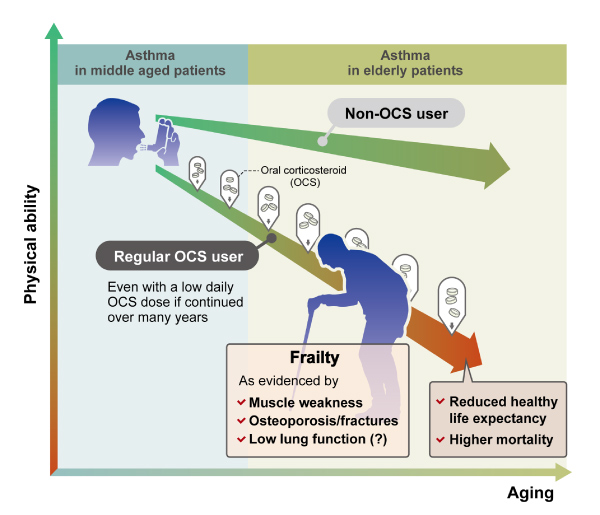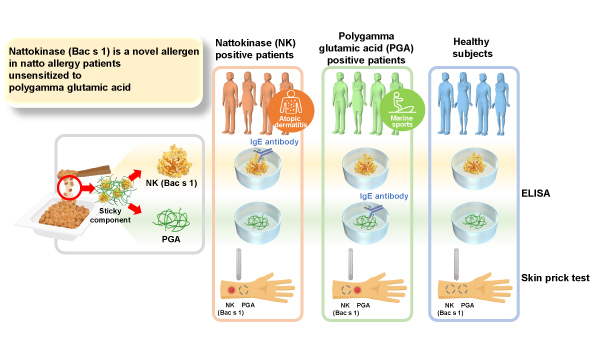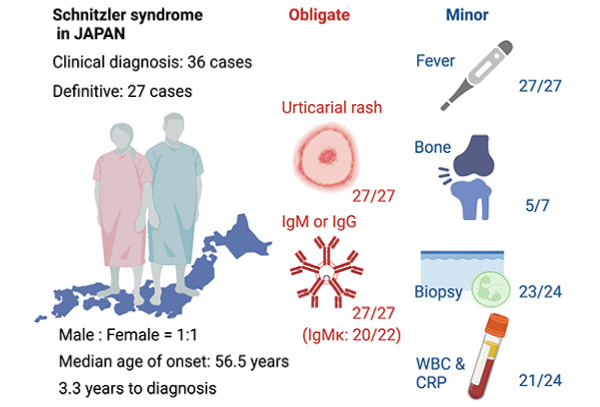Volume 72, Issue 2 (April 2023)
Editor's Choices
Editor’s comment: Asthma treatment has evolved in recent years, with the widespread use of inhaled corticosteroids and biological agents. However, for some patients, oral corticosteroids (OCS) are still the treatment of choice. Ryu et al. investigated an association between lifetime OCS exposure with frailty and muscle weakness among elderly patients with asthma. They found that cumulative lifetime OCS exposure was associated with a higher prevalence of frailty and muscle weakness, indicating the importance of minimizing lifetime OCS exposure for prolonging healthy life expectancy in patients with asthma.
Editor’s comment: Natto, a famous Japanese dish prepared by fermenting soybeans, can sometimes cause anaphylaxis. Epicutaneous sensitization to poly-γ-glutamic acid (PGA) by jellyfish stings is known to contribute to the sensitization to natto. Suzuki et al. examined the antigenicity of nattokinase, a subtilisin family serine protease, in patients who had natto allergy but were negative to PGA on a skin prick test. They found that a substantial number of PGA-non-sensitized patients were sensitized to nattokinase.
Editor’s comment: Schnitzler syndrome is a rare disorder characterized by recurrent febrile rash, bone and joint pain, fatigue, and systemic inflammatory responses with leukocytosis, enlarged lymph nodes, and a monoclonal IgM component. Takimoto-Ito et al. performed a nationwide survey of major dermatology departments in Japan along with a systematic search of PubMed and Ichushi-Web for Schnitzler syndrome. In Japan, they found 36 clinically diagnosed cases from 1994 through the spring of 2022, with a male-to-female ratio of 1:1. They summarized characteristics of these patients, including symptoms, responses to various treatments, and prognosis.





